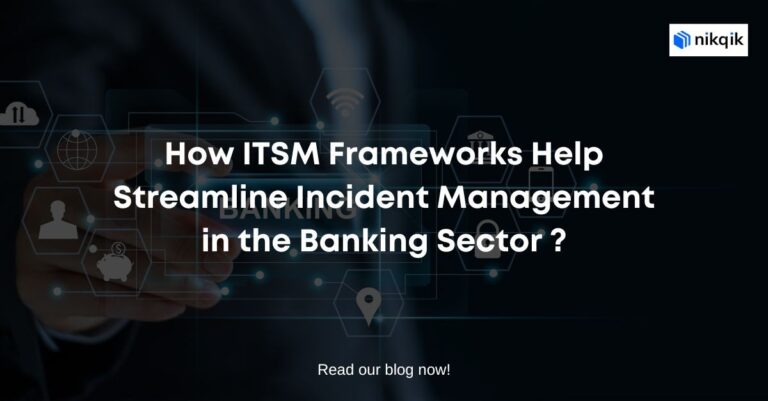Managing IT assets in the finance sector can feel like walking a tightrope. With the constant pressure of regulatory compliance, the need for data security, and the challenges of legacy systems, it’s no wonder that financial institutions face a unique set of hurdles. Additionally, managing IT Risks becomes an increasingly critical task as threats evolve. Proper IT Asset Management is also essential to ensure that all technology resources are effectively tracked and utilized. In this blog, we’ll explore some of these challenges and how IT Service Management (ITSM) offers a structured approach to tackle them.
The Challenges of IT Asset Management in Finance
1. Regulatory Compliance
Financial institutions are under the watchful eye of regulators. Laws like GDPR and PCI-DSS impose strict requirements for data handling and security. Keeping track of all IT assets and ensuring compliance can be daunting, especially when regulations evolve.
2. Data Security
In finance, the stakes are high. Protecting sensitive customer information from breaches isn’t just good practice; it’s essential. The challenge lies in ensuring that all IT assets are secure and that access controls are properly implemented.
3. Asset Lifecycle Management
From acquisition to disposal, managing the lifecycle of IT assets involves intricate planning. Overlooking any phase can lead to inefficiencies and increased costs, not to mention potential compliance issues.
4. Cost Control
Balancing the budget while ensuring that IT assets are utilized effectively is a constant struggle. Financial institutions need to make informed decisions about investments in technology, which can be tricky without clear insights.
5. Integration with Legacy Systems
Many financial organizations still rely on outdated technology. Integrating new IT assets with these legacy systems can lead to compatibility issues and hinder overall performance.
6. Rapid Technological Changes
The tech landscape is evolving faster than ever, and keeping up can be overwhelming. Financial institutions must be agile, ready to adapt to new technologies while managing existing assets.
7. Risk Management
Identifying and mitigating risks associated with IT assets is crucial. A single vulnerability can lead to significant financial and reputational damage.
8. Performance Monitoring
Constantly monitoring the performance of IT assets to ensure they meet business needs can be resource-intensive. Without effective tracking, organizations risk underperformance and missed opportunities.
How ITSM Provides a Structured Approach
Now, let’s delve into how IT Service Management can provide a solution to these challenges.
1. Asset Inventory Management
ITSM tools enable comprehensive tracking of IT assets, offering a clear view of what you have and where it’s located. This transparency is essential for effective management and compliance.
2. Change Management
Changes to IT assets can be risky, but ITSM frameworks help manage these changes in a structured way. This reduces the likelihood of disruptions and helps maintain compliance with regulations.
3. Incident and Problem Management
When issues arise, ITSM provides streamlined processes for incident and problem management. This ensures that disruptions are minimized, and service delivery is maintained, ultimately enhancing customer trust.
4. Configuration Management Database (CMDB)
A CMDB offers a centralized view of all IT assets and their relationships. This aids in risk assessment and impact analysis, allowing organizations to make informed decisions.
5. Compliance and Audit Trails
ITSM tools facilitate the maintenance of documentation and audit trails, making it easier to demonstrate compliance during audits and adhere to regulatory requirements.
6. Automated Workflows
Automation of routine tasks through ITSM not only improves efficiency but also reduces the likelihood of human error, ensuring that processes are executed consistently and accurately.
7. Performance Metrics
With ITSM, organizations can collect and analyze performance metrics, enabling data-driven decisions about asset utilization and return on investment (ROI).
8. Service Level Agreements (SLAs)
By establishing SLAs, ITSM helps ensure that IT assets meet defined performance standards, aligning IT services with business goals.
By leveraging ITSM best practices, organizations can enhance compliance, improve security, and optimize asset performance—all while ensuring they’re prepared for the future.
At Nikqik Technologies, we understand the unique challenges that financial institutions face in managing their IT assets. Our expertise in IT Service Management equips organizations with the tools and strategies needed to streamline operations, enhance compliance, and optimize asset performance. With our tailored solutions, we help you navigate the complexities of the financial landscape, ensuring your IT infrastructure is robust, secure, and future-ready. Let us partner with you to transform your IT asset management and drive your business forward.
Embracing ITSM is not just a choice; it’s a strategic move that can safeguard your institution’s integrity and success in an increasingly complex landscape. Are you ready to take the leap?












